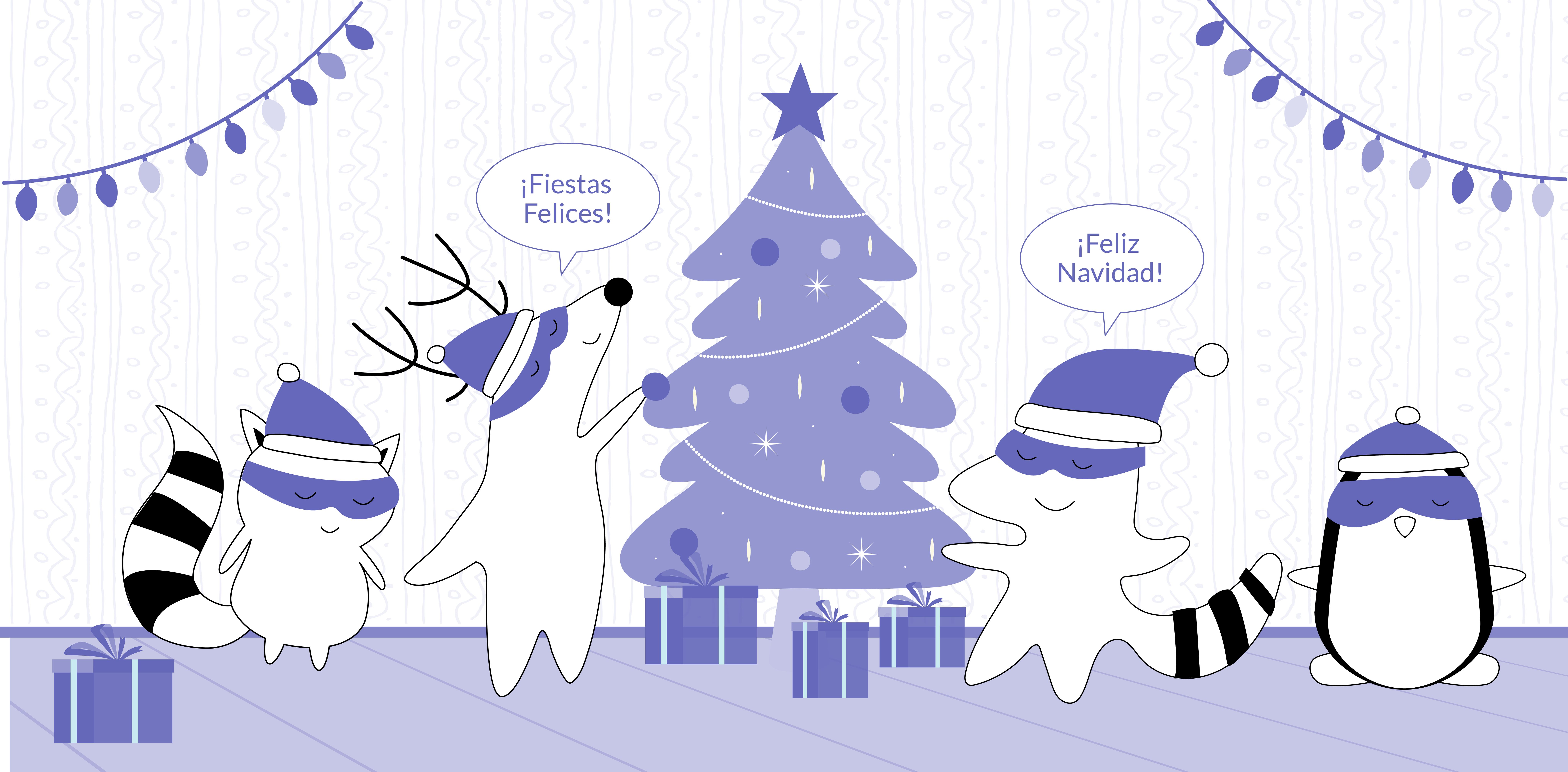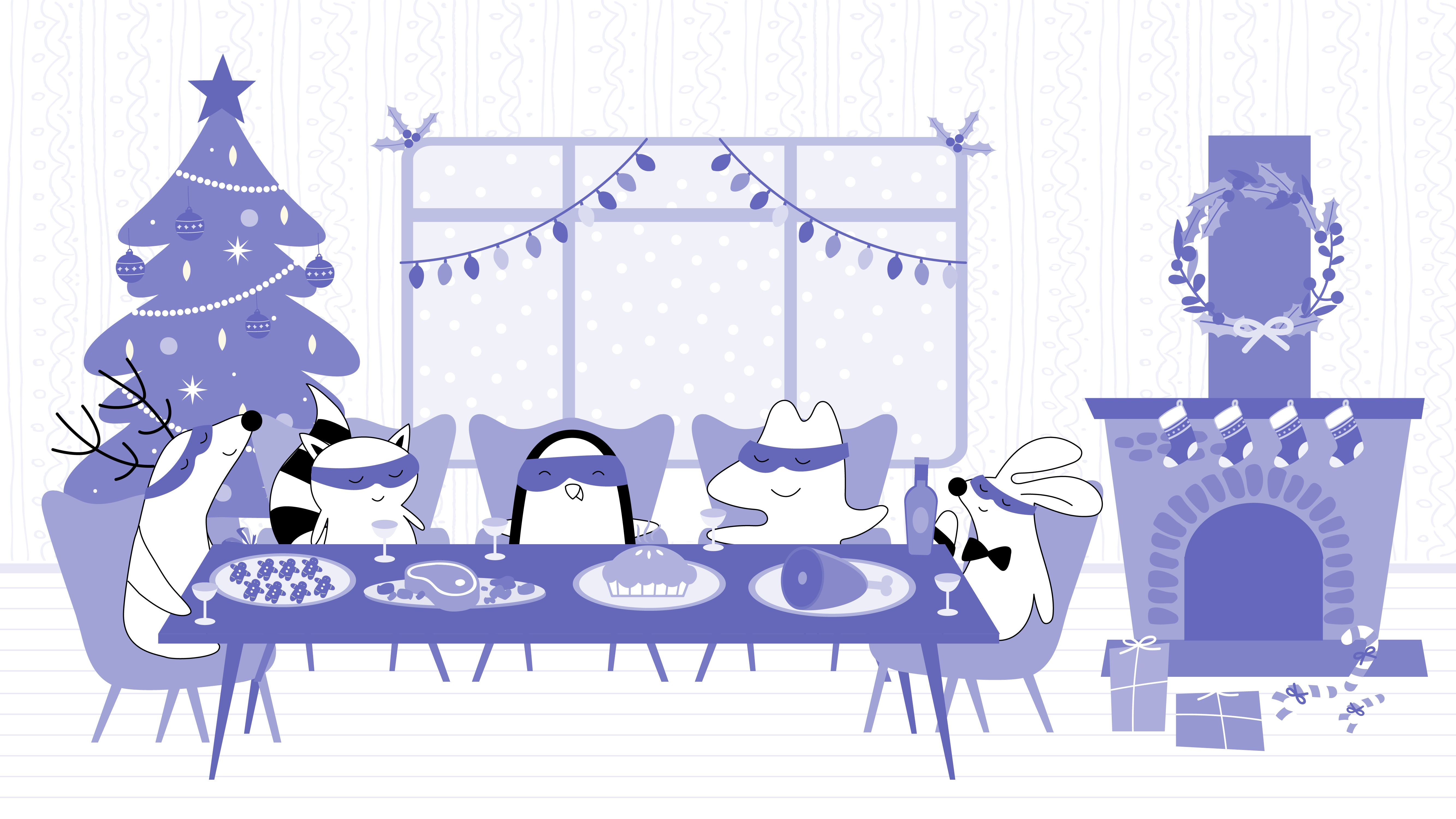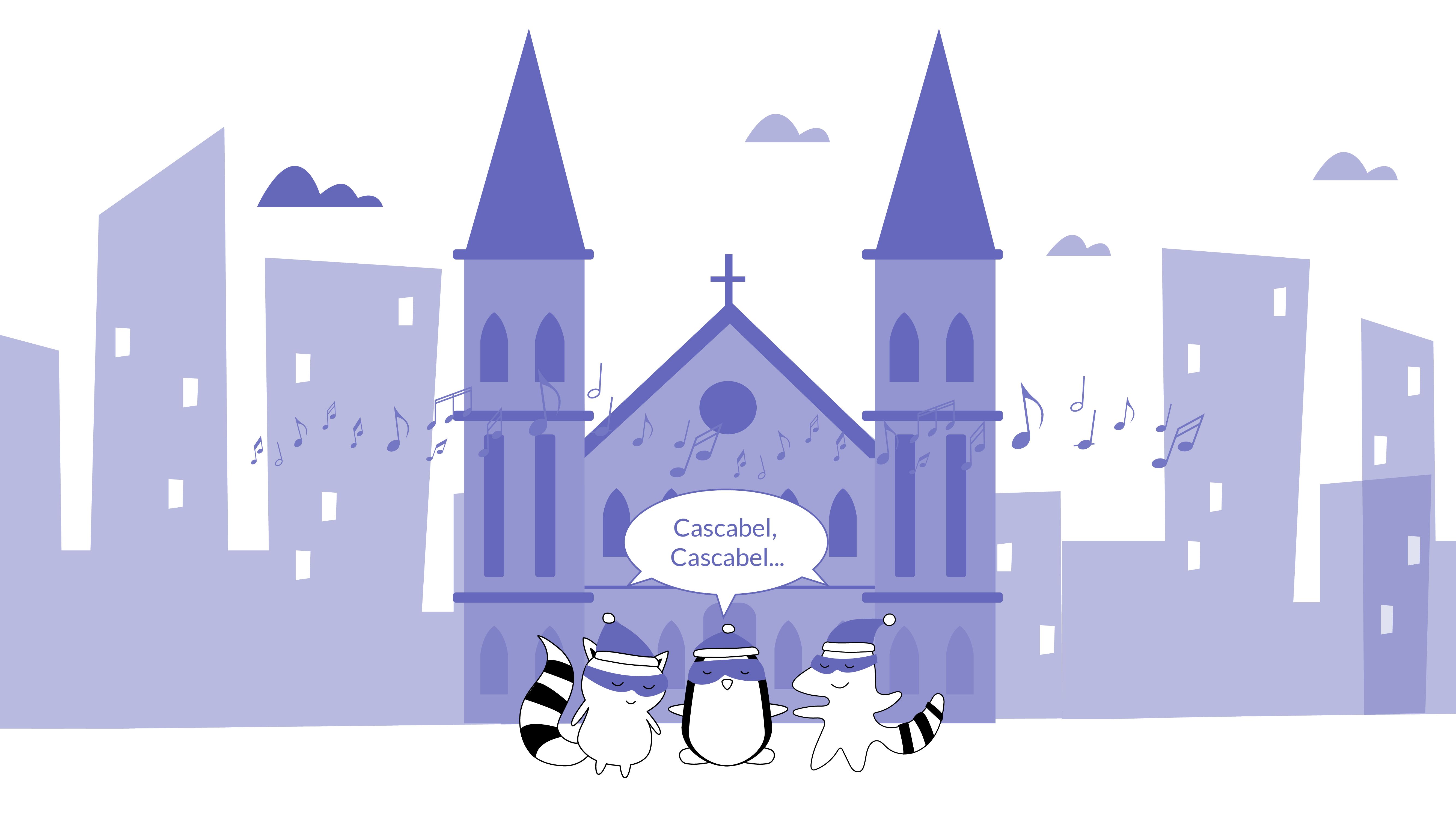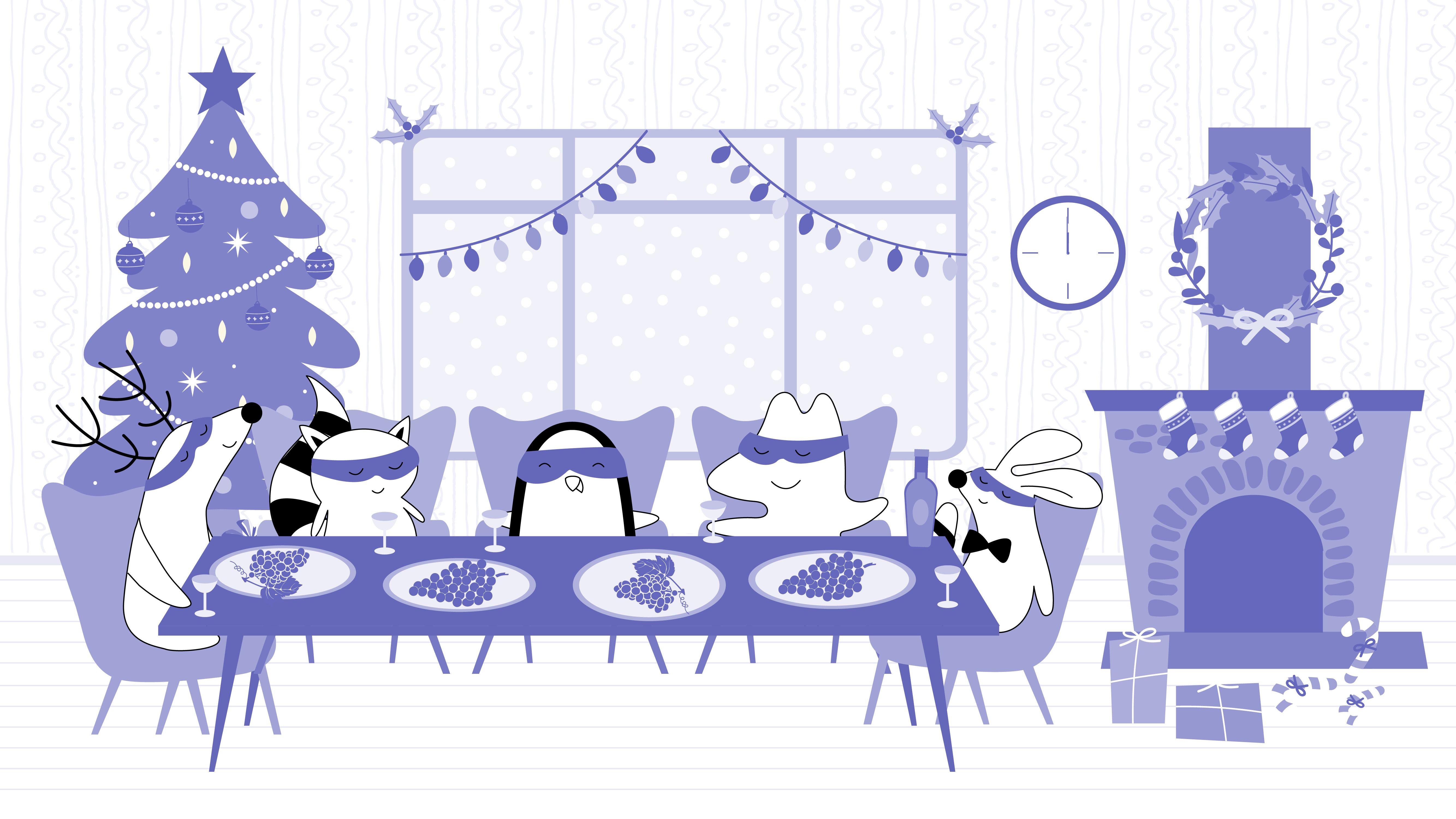
In the United States, Christmas is a time for family, friends, and giving. Americans typically celebrate Christmas on December 25th with a big feast and lots of presents. But, did you know that other countries have their own unique way of celebrating Christmas?
Spain is one such country. In fact, Christmas in Spain is quite a treat. Celebrations in Spain start as early as December 22nd and last until the 6th of January, making it 15 days of festivities! Without any exaggeration, Spanish Christmas is perhaps the most traditional, family-oriented celebration in the whole world.
During this time, Spaniards enjoy traditional Spanish food and drinks, go to church services, sing carols, and exchange gifts. Read on to learn more about the uniquely Spanish elements of Christmas!
Learn Spanish with Langster
Essential Spanish Vocabulary for Christmas Celebrations
Before you can fully appreciate the Spanish way of celebrating Christmas, it helps to know some common words and phrases from Spanish holiday vocabulary.
The most important phrase to remember is Feliz Navidad, which means Merry Christmas in Spanish and can be literally translated as Happy Christmas.
Spanish
English
¡Feliz Navidad!
Merry Christmas!
Here are a few essential things to say or understand during your holiday season in Spain:
Spanish
English
¡Feliz Año Nuevo!
Happy New Year!
¡Feliz Navidad y Próspero Año Nuevo!
Merry Christmas and Happy New Year!
¡Fiestas Felices!
Happy Holidays!
Here are some useful phrases that will help you get around native Spanish speakers:
Spanish
English
¡Deseo una feliz Navidad!
I wish you a merry Christmas!
¡Que tengáis buenas fiestas!
Have a great holiday season!
¡Subamos el árbol de Navidad!
Let’s put up the Christmas tree!
¡Canta un villancico!
Let’s sing a Christmas carol!
¡La Navidad es maravillosa!
Christmas is wonderful!
And, of course, Christmas wouldn’t be possible without these two:
Spanish
English
Papá Noel
Santa Claus
Nochebuena
Christmas Eve
Most Important Spanish Christmas Traditions and Customs
Spain is a country filled with unique and colorful traditions, and Christmas is no different. Here are a few of the most important customs that you should know about:
Nochebuena – Christmas Eve
On December 24th (Christmas Eve), Spaniards gather together for a big feast. It is an incredibly special meal called Nochebuena, and in most Spanish-speaking countries, people take great care in preparing it.
It usually consists of a roasted turkey, served as the main dish, accompanied by several side dishes such as salad, seafood paella, white asparagus, and sautéed mushrooms. For dessert, a traditional Spanish cake called bizcocho is typically served.
In addition, you will definitely find a set of Christmas sweets on the table – Yemas de San Leandro (a dessert made with egg yolks and sugar), Roscón de Reyes (a sweet bread with a surprise inside), turrón (a type of nougat made of toasted sweet almonds and honey), and, of course, marzipan (a traditional dessert of almond and sugar paste).
And, of course, no Nochebuena feast is complete without cava – a sparkling wine produced in Spain. Cava is typically served chilled and pairs well with the savory dishes that are served during Christmas Eve dinner.

Portal de Beléns - Nativity Scenes
The Portal de Beléns display is an iconic part of Spanish Christmas celebrations. It’s a traditional Nativity scene composed of tiny figures that depict the birth of Jesus. The figures usually include Mary and Joseph, the baby Jesus, shepherds, animals, and even the Three Wise Men (los Reyes Magos, also known as The Three Kings).
Furthermore, the traditional Nativity scene in Catalonia has an extra character – the caganer, who always has his pants down taking a poop.
The Portal de Beléns is a representation of the journey of the Three Wise Men, and it’s an essential part of Christmas celebrations in Spanish-speaking countries. The scene can be found in almost every home and public place during the Christmas period.
El Dia de los Reyes Magos – The Day of the Three Kings
January 6th is celebrated as El Dia de los Reyes Magos, or The Day of the Three Kings. This is the day that the three wise men arrived to visit Baby Jesus. On this day, children often receive gifts from the three kings, who bring presents for all good children in Spain.
On the evening of January 5th, children usually leave a box near their beds with hay and food for the camels of the three kings. When they wake up in the morning, they find that their presents have been replaced by new ones from the three wise men!
The Caga Tió – A Special Present Giver
The Caga Tió is a special figurine that plays an important role in Spanish Christmas celebrations. The Caga Tió (Pooping Log) is basically a log with two sticks for legs and arms, dressed up to look like a little old man. He wears traditional Catalan clothes – a red hat, a woolen scarf, and a belt – and is placed by the fireplace on Christmas Eve.
Traditionally, children are encouraged to give the Caga Tió a rousing performance of songs and dances. Afterward, they will hit the log with sticks in order to “encourage” him to drop off – “poop out” – presents like candy, fruits, nuts, or other small gifts.
The Caga Tió is an incredibly fun custom that all Spanish children look forward to during the holiday season!

Midnight Mass
Midnight Mass is another interesting aspect of Spanish culture. It’s an important religious event that takes place in most Catholic churches throughout Spain on Christmas Eve. It’s a beautiful way to celebrate the birth of Jesus, and it is something many Spaniards will attend, even if they don’t usually go to church.
The midnight mass usually starts around 11:30 pm, and it can last up to two hours. During the mass, a special sermon is said, and traditional songs are sung.
Villancicos – Spanish Christmas Carols
Spanish carols, or villancicos, have been an important part of Spanish Christmas celebrations for centuries. Villancicos are typically sung in either group or solo form during the holiday season as a way to bring people together and spread festive cheer.
Villancicos come in many varieties – some are playful and humorous, while others are more solemn and religious. Some of the most well-known villancicos include:
- A Belén pastores,
- Ya es Navidad,
- A las 12 de la noche,
- Navidad, Navidad, hoy es Navidad,
- Una pandereta suena.
Listen to a few villancicos, and you’ll find that Spanish Christmas carols can be quite joyful and uplifting!

El Gordo – The Fat Lottery
Another traditional Christmas custom in Spain is the El Gordo – a Spanish Christmas lottery. On December 22nd, millions of Spaniards buy tickets and then gather around their television to watch the drawing. It’s a very exciting event, and many families purchase multiple tickets in the hope of winning one of the prizes!
Nearly everybody in Spain plays la Lotería de Navidad, but the second-largest draw of the year is the El Niño lottery, which takes place on January 6th – which, as you already know, is also The Three Kings’ Day.
12 Grapes on New Year’s Eve
On New Year’s Eve, Spaniards often follow a tradition that has been around since 1895. The tradition is to eat 12 grapes – one for each chime of the clock at midnight – while making a wish. It’s believed that the last grape will bring good luck in the coming year.
To make it even more exciting, many people like to eat the grapes in a particular way – they put each grape in their mouth just before a chime and chew it at the same time. This makes for an intense but fun experience!
The Bottom Line

Spanish people take great pride in their distinct way of celebrating Christmas, and you’ll be sure to find plenty of joy and cheer during your holiday season in Spain. From the delicious food to the beautiful nativity scenes, there’s nothing like a Spanish Christmas!
From all of us at Langster, ¡Feliz Navidad y Próspero Año Nuevo! Happy Christmas!









